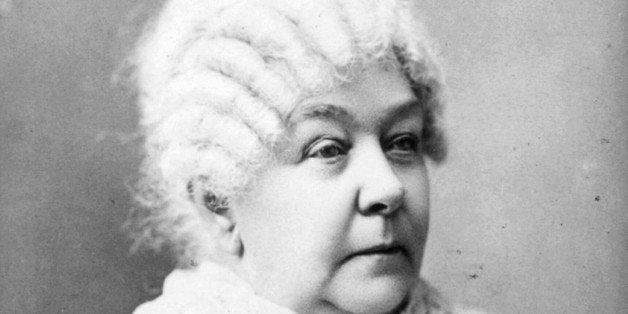
On my many trips to Seneca Falls, New York (the birthplace of women's rights and the home of the National Women's Hall of Fame), I think about the outsize impact this small community and the area of the Finger Lakes has had on the women's rights movement and many other social movements. The four women profiled below have all been inducted into the National Women's Hall of Fame. Match the woman with her accomplishment:
____ 1. Wrote the Declaration of Sentiments, the document issued at the 1848 Women's Rights Convention; played a pivotal role in the fight for women's rights for five decades.
____ 2. Known mainly for her activist writings, the motto on her gravestone was her lifelong motto: "There is a word sweeter than Mother, Home or Heaven; that word is Liberty."
____ 3. After having the word "obey" omitted from her wedding vows, this women's rights and temperance activist became known for her wearing of pantalettes, a costume which today bears her name.
____ 4. Although a delegate, she was denied a seat at the World Anti-Slavery Convention in London in 1840. She became determined to advocate for women's rights when she returned to the U.S.
A. Lucretia Mott
B. Elizabeth Cady Stanton
C. Amelia Bloomer
D. Matilda Joslyn Gage
Elizabeth Cady Stanton and Lucretia Mott met in London, England in 1840 at the World Anti-Slavery Convention. Mott was a delegate and denied a seat, as were all of the women delegates from the U.S. Stanton was there on her honeymoon; her husband was a delegate. During the many hours that they spent together, Mott and Stanton vowed that when they returned to the U.S., that they would advocate for women's rights. That opportunity finally presented itself in Seneca Falls, New York in 1848.
On July 19 and 20, 1848, almost 300 people gathered at the Wesleyan Methodist Church in Seneca Falls. James Mott, Lucretia's husband, chaired that first women's rights convention. The Declaration of Sentiments, which Stanton had drafted based on the Declaration of Independence, was adopted. With words that at the time were probably regarded as heresy "that all men and women are created equal," the document also listed 18 grievances, including the lack of the right to vote. The battle -- which would take 72 years -- had begun.
Mott grew up in the Quaker faith and was an ardent abolitionist. At the 1848 Convention, she delivered the opening and closing addresses. After a second convention two weeks later in Rochester, New York, Mott devoted much of her time to the women's rights movement. In total, she spent 50 years of her life advocating for human rights -- for the right to be freed from slavery and for rights for women.
Stanton also spent 50 years of her life advocating for women's rights. After the Seneca Falls Women's Right Convention, she wrote and spoke and became a strong partner with Susan B. Anthony (also an inductee into the National Women's Hall of Fame).
Amelia Bloomer, whose wedding vows omitted the word "obey" (as did Elizabeth Cady Stanton's), began her activist activities by writing articles for a temperance journal in Seneca Falls. Bloomer attended the 1848 Seneca Falls Women's Rights Convention. In 1849, she began publishing the Lily, which carried articles written about women's rights by Stanton, as well as temperance articles. By the early 1850s, Bloomer had defended the wearing of pantelettes and began herself to wear what became known as the "Bloomer Costume." She wore the clothing as she became an active speaker on the women's rights circuit. Eventually she became concerned that attention paid to her clothing was detracting from the women's rights movement and returned to more conventional attire. After she and her family moved to Council Bluffs, Iowa, she served as president of the Iowa Woman Suffrage Society and continued her women's rights work there.
Matilda Joslyn Gage began her association with the women's rights movement at the 1852 National Women's Rights Convention in Syracuse, New York. Too soft-spoken to be an effective speaker, she found her voice through her writings. She edited the newspaper of the National Woman Suffrage Association, wrote pamphlets and worked on the first three volumes of the History of Woman Suffrage. Later, she formed her own organization to advocate for women's rights. Her gravestone contains her lifelong motto: "There is a word sweeter than Mother, Home, or Heaven: that word is Liberty.
Learn about more she-roes and celebrate amazing women. These activists are among the more than 850 women profiled in the book Her Story: A Timeline of the Women Who Changed America. We benefit from their hard-fought battles and are proud to stand on their shoulders.
(answers: 1-B, 2-D, 3-C, 4-A )
